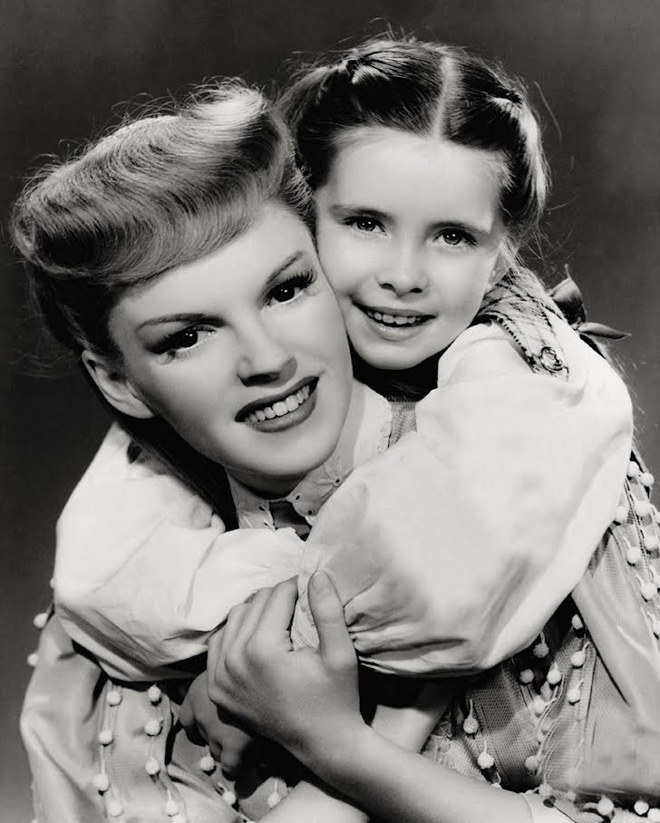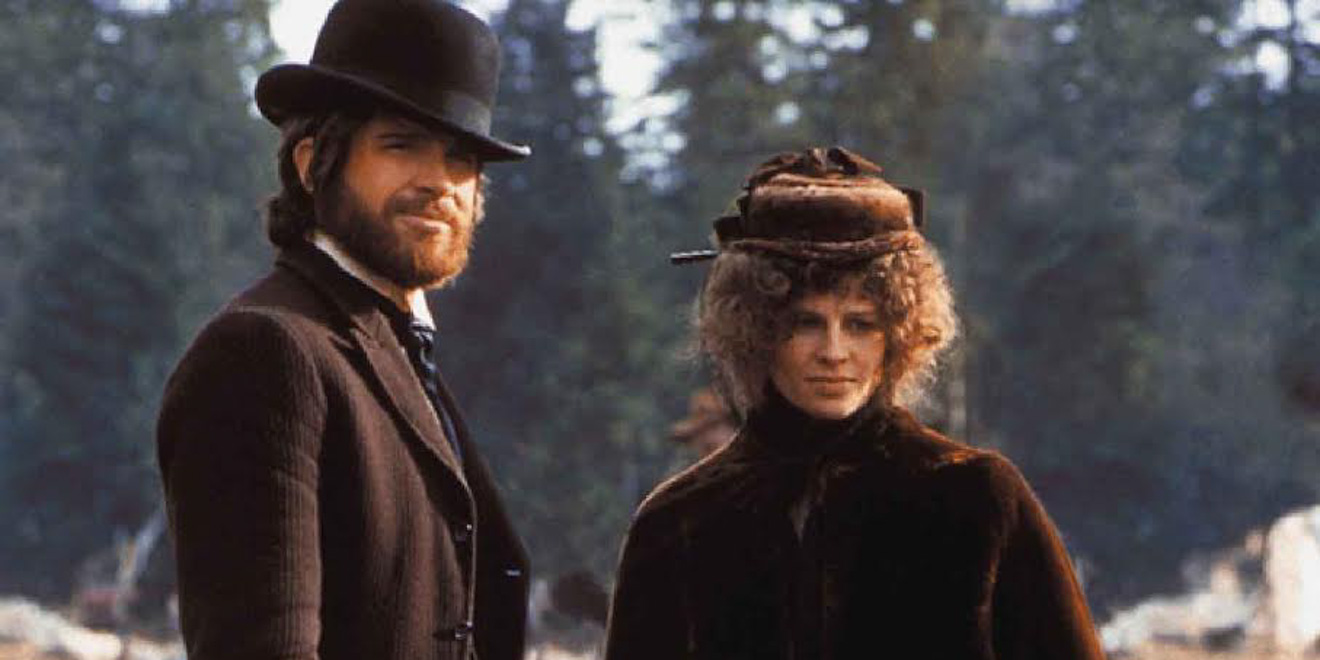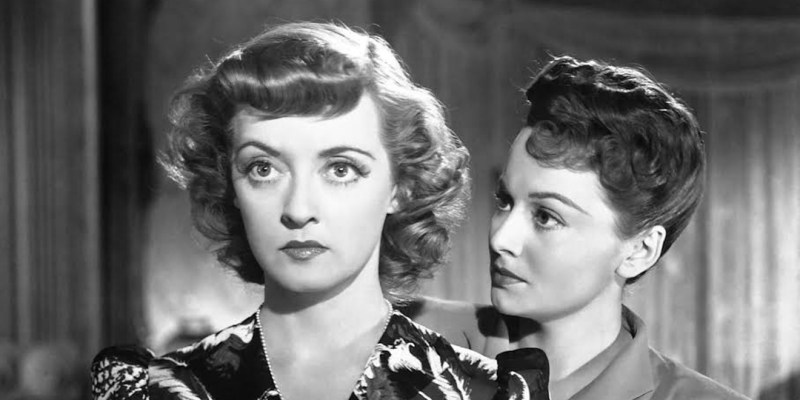In this week’s Recs from the Vault (a weekly column of some old reviews I’ve written about films that I’ve loved during my time here at Stanford), we take a look at three emotional juggernauts. They’re all available to watch at the Media and Microtext Center in Green Library. The first is best seen on a hot summer day; the third, on a wintery night. Any clime or time is fine for the second.
“In This Our Life” (1942)
Crazier than sin; as Justine Smith wrote, “it’s a classic of anti-chill cinema.” John Huston’s unjustly forgotten sophomore feature is like a gangster flick with Bette Davis as Scarface. Davis steals and kills more husbands than we can keep track of; Olivia de Havilland is her “good” sister who dates a man (George Brent) who may or may not be a socialist, integrationist radical; Liv’s idea of a romantic night out is watching a forest burn. Charles Coburn plays the jolly old uncle who pervs on Davis — who returns his incestuous flirtations in order to get what she wants.
Here, Davis is at peak star power, in the middle of her “Jezebel”/”Now, Voyager”/”The Letter” period at Warner Bros. You can’t look away from the screen, because you can’t believe the lengths to which this post-Scarlett O’Hara belle will go to secure her personal happiness. If it means blaming the town’s only black law student (Ernest Anderson) for a hit-and-run she committed, because she knows her white privilege will let her get away with it, then she’ll do it. The prison scene where she visits him is pure sadism: She knows every white cop in town will take her word over his.
This progressive potboiler deftly deconstructs the genteel Southern plantation drama. In the film’s opening, a dummy Tara is being torn down in the middle of the city by untyped, urban black workers. Hattie McDaniel, who won an Oscar for her animation of the ultimate screen Mammy (“Gone with the Wind”), picks apart that very same type. She plays Anderson’s mother with a chilling low-key dignity: “They wouldn’t believe a colored boy,” she explains, tearfully, to Liv — who plays a curdled and more world-weary variant of her most famous creation, Melanie Hamilton.
“In This Our Life” was quickly churned out on the heels of John Huston’s “The Maltese Falcon,” and it shows: the moody noir chiaroscuro, the mad scramble of events, the desperate image of a rotten city. The title doesn’t do it justice: it should have been called “White Heat” or “Great Balls of Fire.” Based on the Pulitzer Prize-winning novel of the same name by Ellen Glasgow. The swirling score is by Max Steiner, the composer of “Gone with the Wind.” 97 minutes. Black-and-white. ZDVD 17232.

“Meet Me in St. Louis” (1944)
Really one of the saddest musicals in existence. No surprise, considering it was directed by Vincente Minnelli, whose depth of feeling is unparalleled among Hollywood directors. Minnelli’s colors, the cooking of bright-red ketchup and Judy Garland’s cakewalk dances are manic attempts by the Smith family to keep their depression at bay, futile efforts by the Smith sisters to remain kids forever. As soon as the fun parts of the day end (John Truitt turns off the warm, orange lights after he asks Judy to marry him), darkness creeps in (Judy and sister Tootie are cloaked in deep-dark blues — the shade of sorrow; they will be moving to a new city where they know nobody and won’t be able to do anything “like we do in St. Louis.”) Judy Garland only infrequently smiles. In “Have Yourself a Merry Little Christmas” (a performance that never fails to produce shivers down my spine and tears in my eyes), she degrades into melancholy, forgetting that she’s supposed to be singing to make Tootie feel better, instead turning her eyes to the heavens and mourning some kind of death, the family’s, the home’s, perhaps her own.
“Meet Me in St. Louis” is a precarious film, a bauble of happiness that slowly shatters with the final, rueful lines:
“Grandpa? They’ll never tear it down, will they?”
“Well, they’d better not.”
By the end, I find myself missing St. Louis so much — and I’ve never even been. 113 minutes. Color. ZDVD 14814, ZDVD 26196.

“McCabe & Mrs. Miller” (1971)
Loneliness in community — or, as Robert Altman would prefer it, communal loneliness. The blurring of dreams and reality. An “auburnt”-sepia-postcard look that conflates the reality of the past with an illusory perception of what it was like from the present. The break-down of physical space. Manny Farber nailed it: “The lay of the land, in the Seventies film, is that there are two types of structure being practised: dispersal and shallow-boxed space. ‘Rameau’s Nephew,’ ‘McCabe & Mrs. Miller,’ ‘Céline and Julie Go Boating,’ ‘Beware of a Holy Whore’ are films that believe implicitly in the idea of non-solidity, that everything is a mass of energy particles, and the aim, structurally, is a flux-like space to go with the atomized content and the idea of keeping the freshness and energy of a real world within the movie’s frame. Inconclusiveness is a big quality in the Seventies: never give the whole picture, the last word.”
Robert Altman’s cinema: half-swallowed words jumbling over one another; cohesion is not the aim, nor can it be the aim in this brave cold world. The beauty of the world infrequently flashes up from the muck: a soliloquy delivered by a half-crazed fool in love whose sole audience is his bed; a gathering around a camp-fire to hear “Silent Night” picked on Leonard Cohen’s guitar (his mournful songs are the film’s brilliantly out-of-time soundtrack); the morning glow of a whore in the arms of a dumb kid cowboy (Keith Carradine) who’s here one day and brutally gunned down the next. These are moods and modes which vanish, painfully but necessarily, with the relentless march of time. Warren Beatty’s McCabe smothered by the snows of history, Julie Christie’s Mrs. Miller lost in an opium haze. We exit through her eyeball, she who (by her very inability to restore balance) restores the sanctity of what it means to live.
“McCabe & Mrs. Miller” does not cater to a formula; it does not fit into a mold. This snowy western breaks apart, diffusing like P.B. Shelley’s Ozymandias — the tip of the tongue receding further and further into the maw: “The lone and level sands stretch far away.” 121 minutes. Color. ZDVD 39828 BLU-RAY, ZDVD 39823 DISCS 1-2.
Contact Carlos Valladares at cvall96 ‘at’ stanford.edu.
